Can You Keep Gourds From Year to Year
Gourd Seed
Grow your own fall decorations and craft items from the seeds below.
Click hither to larn how to Paw Pollinate your Gourds
Ornamental gourds can be divided into two major botanical groups. They all belong to the Cucurbitaceae (Cucurbit) family, which includes many types of squash and pumpkins. The bright, multi-colored, thick-shelled, sometimes warty types are of the Cucurbita genus (C. pepo). Cucurbita gourds include such colorful types every bit the daisy gourd, polish and warted mixes, egg types, and winged gourds. Equally a grouping, Cucurbita gourds accept hard angular stems, just a few wintertime squash types used as ornamentals have soft corky stems, such as the 'Turks Turban' variety, and vest to the Cucurbita maxima species. In general, the types with difficult stems tend to go on longer. The Cucurbita have prickly leaves and stems, and yellowish flowers.
The second group includes the hard, thin-shelled "utility" bottle/birdhouse gourds belonging to the Lagenaria genus. The Lagenarias have smooth stems; soft, large leaves; and white flowers. The Lagenaria gourds are tan to brown when mature with long, narrow difficult stems and have many distinct shapes and sizes. This includes such unique types as the caveman'south club, calabash, dolphin (maranka), swan gourd, Corsican flat, apple, drum, bottle, and pocket-sized and large dipper types.
Days to maturity will vary past species and diverseness, ranging from xc days from seed for the small-scale Cucubita gourds to over 120 days for Lagenaria types. As the weather cools in the fall, additional fourth dimension in the field may be needed.
The Cucurbitaceae family is tropical and sub-tropical in origin, and does not tolerate cold soils or cool growing temperatures. Even a calorie-free frost will significantly damage foliage and impede crop evolution. Planting should be delayed until the tardily spring when soils accept warmed. When making planting appointment decisions, average autumn frost engagement and marketing catamenia should be considered along with varietal days to maturity. Proper timing of the planting to allow the crop to mature before frost is of particular importance. These factors should as well be considered when making decisions to direct seed or transplant the crop in the field.
Both species have sprawling growth habits and require room to spread. Lagenaria types readily climb past long twining tendrils, and are oft grown supported by a trellis. All cucurbits are monecious (separate male and female person flowers on the same plant), and require insects (bees) to transfer pollen and to prepare fruit. Dark-flying moths are also known to pollinate Lagenaria.
Lagenarias have a long growing season and need early on planting to mature by the finish of the flavor. Otherwise a large percentage of fruit will exist green at showtime frost. In comparing to Cucurbita types, Lagenarias are more sensitive to cold, and more adapted to consistent warm weather atmospheric condition. Soils should be at least 65°F prior to planting. To speed growth and development, utilise transplants instead of direct seeding.
Lagenarias are vigorous growers and develop large plants. Vines may reach 20 to 30 feet in length. Rows should be ten to 15 feet apart, with plants set five to six anxiety apart in the row. Because of the cost of seed and their vigor, multi-constitute hills are not recommended. The above spacing volition require 500 to 700 plants or seeds per acre. For the canteen and dipper types, trellising volition allow fruit to hang, resulting in a straight cervix. If immune to grow on the ground, the fruit will bend in various directions.
The ideal soil pH is in the range of 6.5 to seven.0. A soil examination should be conducted to determine bachelor phosphorous (P), potassium (K), and magnesium (Mg) levels. Depression P and K soils require amendment to increase levels of these nutrients to moderate levels per soil examination standards. Equally a starter fertilizer, at to the lowest degree 50 pounds of P and 100 pounds of K per acre should be applied in most soils. Gourds are sensitive to low levels of Mg, and soils should examination to 100 to 125 pounds per acre of this nutrient. If not, Mg should as well be supplemented preplant. Considering of significant vine and leafage growth, gourds respond to fertile soils and practical nitrogen (N). At planting apply 50 to 60 pounds of N per acre along with P, Yard, and Mg amendments. Vines will begin to run or spread in iii to five weeks after planting. An additional side dressing of 30 to forty pounds of N per acre should be applied to go on plants vigorous. With drip irrigation, supplemental N can be injected and split-practical at two- to three-week intervals. Past late summer, nutrients and water should be reduced. This will permit plants to tedious growth and recently set fruits to mature and harden off.
We take constitute that our Gourd Growth Stimulator is very expert for allowing quicker uptakes of nutrients, and can in nearly cases the days to harvest flow to exist reduced as much as 10 days.
Supplemental irrigation on both tilled and no-till fields can be beneficial during dry periods and increases yields. Irrigation should supplement rainfall with an boilerplate of 1 to 2 inches per calendar week. Water should be withheld during the end of the flavour to hasten maturity.
For small-scale plantings, Lagenaria gourds will answer to vine pruning by increasing the number lateral shoots (runners) and of female person flowers that develop into fruit. Vines should be tipped back once with a mower or by hand when they reach viii to ten feet in length.
Average yields for the pocket-sized Cucurbita gourds will exist from 20,000 to thirty,000 fruit per acre. For the Lagenarias, expect a range of ii,000 to 5,000 gourds per acre.
To clinch quality, timely harvest and proper treatment and curing are necessary. Cucurbita gourds are frost sensitive when mature, and should be harvested before the first predicted frost outcome in the autumn. Total-color development, and the drying and hardening of the stalk and outer pare are harvest indicators. Immature gourds willnot cure well, and are best left in the field. Harvested fruit with spots of disuse or damage or that are too immature should be sorted and discarded. Depending on planting date, a range of fruit maturity is typical, as plants will continually gear up new fruit over the season. Where days to maturity are observed, a large percentage of fruit should be mature on the vine before frost; a few may have passed platonic harvest stages.
At maturity, Lagenaria gourds will begin to change from bright green to pale green and eventually to tan. The stalk will also become more rigid and dry. In contrast to the Cucurbita types, in one case fruit has reached a mature- or firm-green stage, with proper curing they volition normally dry without decay or shrinkage. Some of the Lagenaria types, such as the speckled swan gourds are harvested green and are marketed in a timely mode similar to Cucurbitas. If the season allows, information technology is best to leave them in the field until they are as almost to maturity as possible. Frost may bear on the concluding tan colour, surface pattern, and seed viability, but non the beat out integrity of a mature Lagenaria.
Harvest all gourds with one to 2 inches of stem intact. An intact stem enhances value. Intendance should be taken not to trample or scrape them, and always prune, non tear the fruit from the vine. Freshly harvested gourds tin exist washed in warm, soapy water, using a soft brush to clean warty types. A lite force per unit area rinse may suffice, followed by a dip in clean water with a household disinfectant, rubbing alcohol, or a calorie-free bleach solution (i per centum to 2 percentage). This step is important to reduce fungi and bacteria on the surface that tin can find entry through surface injuries.
Both types are cured under similar atmospheric condition; however, the Lagenaria group requires several months to cure before it can be utilized while the Cucurbita group needs only a few weeks to properly cure for use. When cured properly, Lagenarias will last for many years; the Cucurbita types six to nine months before the colors begin to fade.
Curing is a two-footstep process, involving a brusk period for surface drying, and a second, longer internal curing menses. Surface drying hardens the outer skin and sets the colors for the Cucurbita types. Spread out cleaned gourds on a screen or newspapers in a well-ventilated, partially sunny area, and turn them regularly. Discard any that shrivel or develop soft spots. Surface drying tin can have from a few days to a calendar week.
Gourds tin also be cutting from plants and initially left to dry in the field. This is frequently done with Lagenaria types. Uncleaned, field-dried gourds should be rinsed and wiped down with a disinfectant solution earlier continuing with internal curing. Harvest bins, packing boxes and shipping crates are non advisable places for curing, equally lack of air move will result in rotted gourds.
Internal curing requires a warm (fourscore°F), low-light, and dry location. Warmth encourages rapid drying, darkness prevents colour fading, and dry conditions discourage mold. Bogus heat tin can be used, but without ventilation it tin pb to faster mold evolution. A well-placed fan can assistance speed the process. Cucurbita gourds will need an boosted two to four weeks to final cure, while Lagenaria species may take up to three months to fully cure; longer if they were green at harvest. Seeds rattling inside indicate the gourd is fully dry out. Prior to shipping or display in the market, sort cured Cucurbita gourds one last time for disuse, as potentially immature fruit may have been harvested in the rush to beat frost or get them to marketplace.
During curing of Lagenaria, it is common to see mold growing across the surface. The mold tin get out desirable, unique patterns as it breaks down the waxes and upper skin layers, withal the fruit wall integrity is not diminished. Lagenaria gourds are highly resistant to disuse and to an extent tin be exposed to the elements and variable temperatures.
Long-term wintertime exposure can outcome in cracking and weaken gourds and is non advised. At a minimum, these gourds should be stored in a barn or well-ventilated shed. Regular wiping with booze or a low-cal bleach solution can discourage mold growth if a solid tan colour is desired for these types.
Post-obit curing, gourds can be waxed, lacquered, or painted to extend their life and improve appearance. For colored cucurbita types, well-cured gourds may last 3 to four months without this treatment while coating with wax or varnish will extend storage life and colour retention to six to eight months. Paste wax will provide a soft luster to the gourd, while varnish or lacquer adds a hard, glossy shine. Dip waxes used for fruit such as apples and oranges tin can likewise be used on gourds to extend life, and some commercial buyers require this treatment.
Gourds can exist sanded smooth and painted besides, which can greatly extend the life of the Lagenaria types used outdoors, such as for a birdhouse. Often they are painted gilded or silver for table displays.
Lagenaria types accept many commonsensical uses. The crook-necked types tin be cutting into dippers and scoops; the larger drum gourds used as storage vessels. For birdhouses, drill a pocket-size hole through the top for a hanging cord. On the side, cutting a hole large enough to accommodate wrens, barn swallows, or other small birds. Shake out the dried seeds. A small pigsty drilled in the bottom will assistance drain whatsoever rainwater that finds its style into the business firm. These natural-gourd birdhouses tin last for many years.
Y'all tin can salvage seeds from grourds, only they practice cantankerous pollinated very easily, to ensure that seed is true, isolation or blocking of the planting past diversity should exist proficient to limit crosspollination potential. One of the best methods to ensure true seed is to direct hand-pollinate selected flowers as they open, with a known pollen source.
Apply a ribbon, flag, or other marker to continue runway of these fruit through the harvest period. Fruits should be fully mature before seeds are extracted. Divide seeds from the pulp and spread in a thin layer on fabric or newspaper until dry. Shop seed in a cool, dry out place. Under platonic weather seed may remain viable for 3 to five years.
If y'all are going to make a birdhouse out of the gourds, consider using this guideline for making holes in the gourd birdhouses for different types of birds:
Owls: Barn Owls requires a full 6 inch entrance hole but Screech Owls and Kestrels are smaller and but require a 3 inch entrance opening. You will demand to use bushel or big kettle gourds for these birds.
Wood Ducks: make the front entrance hole four inches in diameter, the shape can be irregular if yous similar. The african wine kettle volition work fine too as the smaller bushel types.
Purple Martins: A lot of folks like a two-ane/8" hole for imperial martins and this volition piece of work fine, just nosotros personally like to make ours an even two inches and this seems to work fine here in the southward.
Sparrows, woody woodpeckers, swallows, yellow belly sap suckers: A 1-one/ii hole seems to work well for all of these.
Chickadees, downy woodpeckers, wrens and nuthatches seem to prefer a i-ane/4" hole.
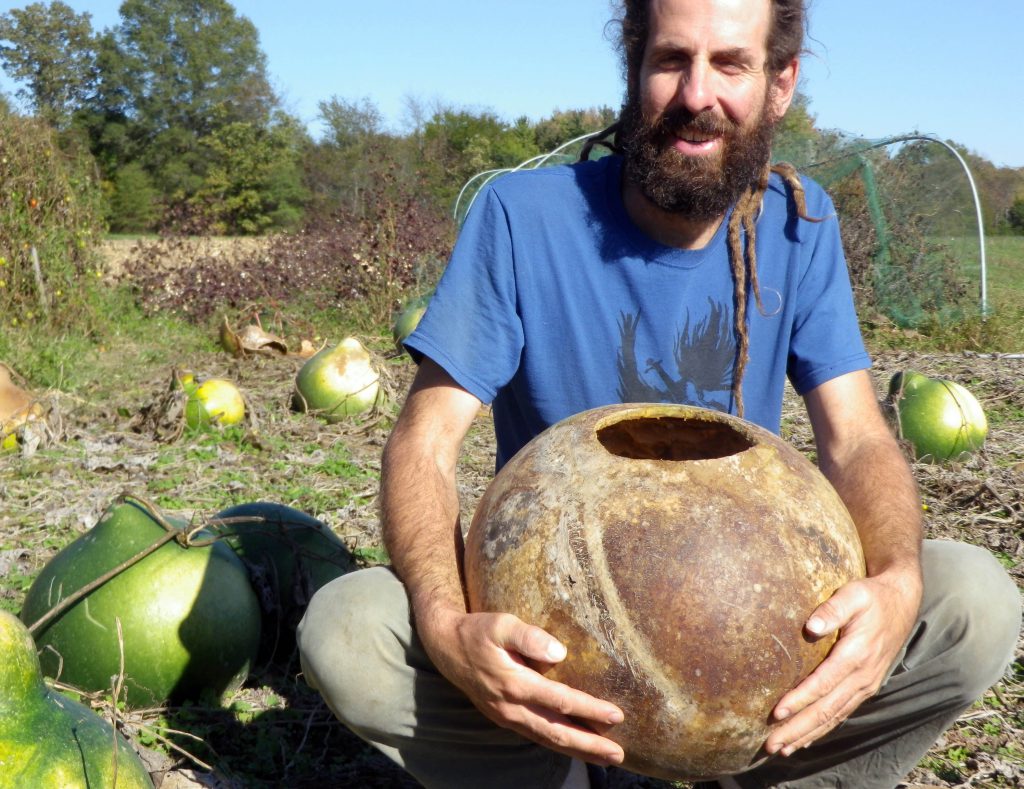
RGS185 African Pulsate ( Lagenaria siceraria )
Very large twenty to 24 inch gourds with thick walls when grown in optimal weather condition (up to 3/iv inch). Shape is round to slightly teardrop. In Common Wealth Seed Growers' 2022 gourd trial of 29 varieties, this is one of only half-dozen that held upward to the heavy Featherlike Mildew pressure and grew well into October. Original seedstock came from Suzanne Ashworth through Seed Savers Substitution. Requires a longer growing flavour than other gourds, virtually 150 days.
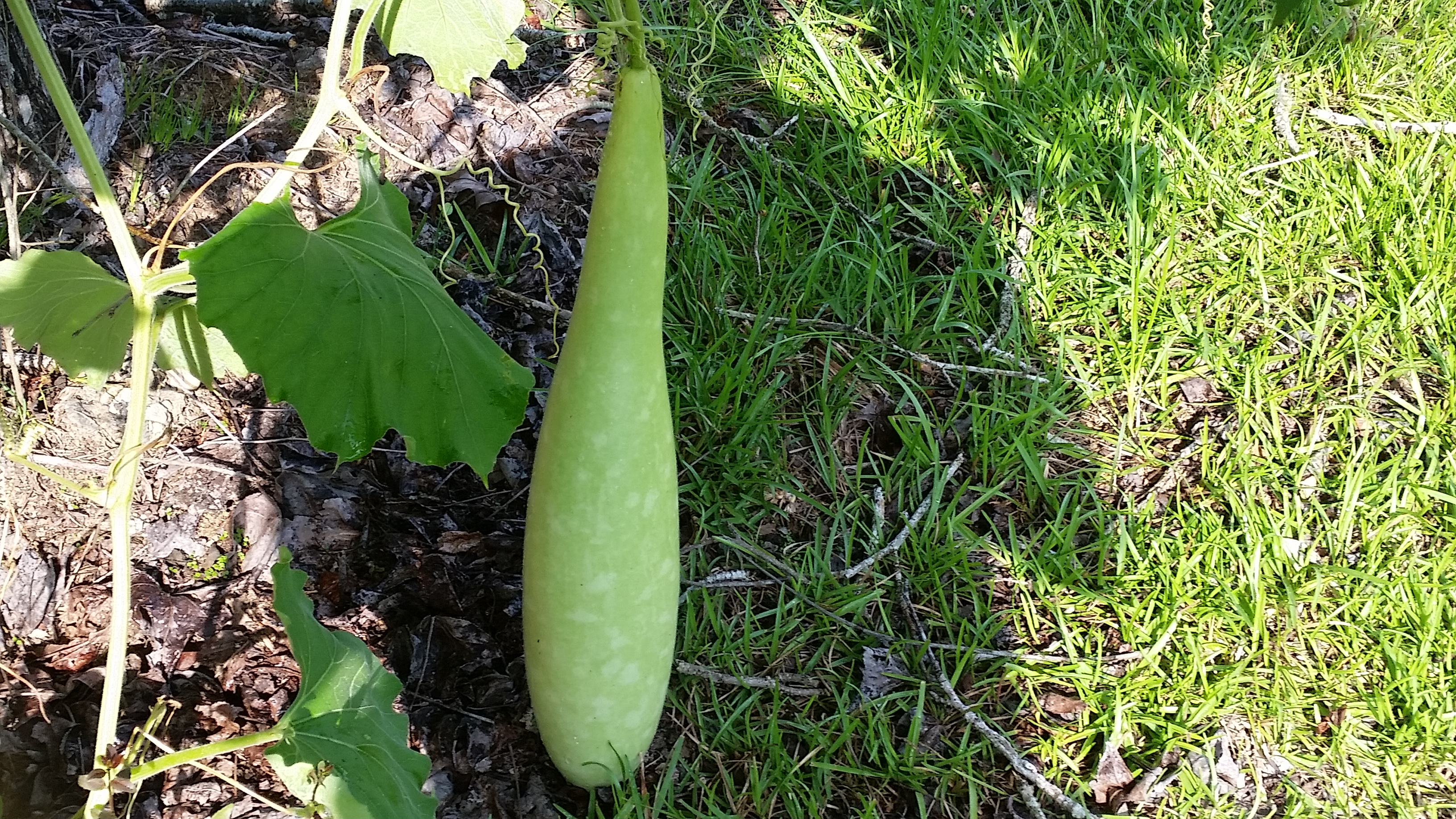
RGS187 Flower Vase Gourd ( Lagenaria siceraria )
This is a great gourd for crafting, it measures well-nigh 4 inches in diameter and nearly xviii inches tall. Has a good thick wall and dries to a buff brownish. Can be grown on the footing, merely for all-time looking gourds, you should grow them on a trellis.
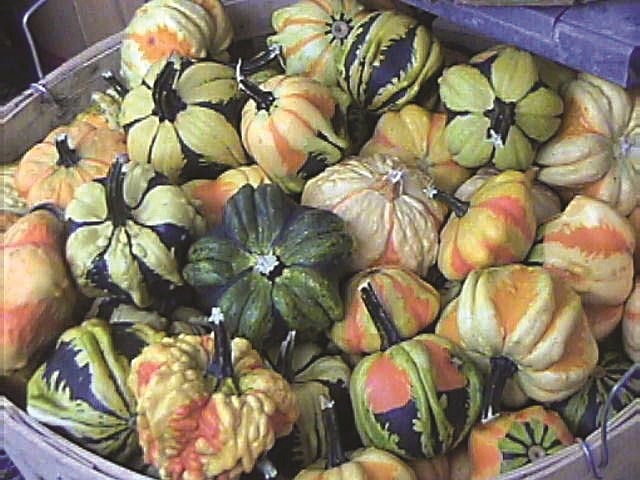
RGS144 Daisy Gourd ( Cucurbita pepo )
95 Days. Mixed colors of green, orange, yellow and white with most having a unique daisy pattern expect on the stem end. The pocket-size gourds measure two.5-3" high past 3" wide. Recommened 1.5-two' spacing in row and six' between rows. It volition yield better if it is non over populated.

RGS165 Cannon Ball Gourd ( Lagenaria siceraria )
This is a very useful gourd that has become very popular for crafting. Information technology matures to well-nigh 4-6 inches in bore, nice round shape, and has a tough, thick crush.
Very popular with artisans. For most crafters, they are a more than manageable iii-dimensional medium than the much larger Basketball Gourd or Kettle Gourd.
Cannonball gourds can be crafted into small bowls, lidded containers, or stacked like real "cannon balls", and many other craft projects.

RGS184 Green Cheese Gourd ( Lagenaria siceraria )
New! The first time we take grown and offered this unique gourd. The fruits average nearly 8 inches across and four to 5 inches tall. Deeply ribbed and does resemble a cheese bicycle. Holds cute greenish splotched colour for a long time, merely eventually dries buff dark-brown. Easy to paint and arts and crafts. Has a very thick, hard rind ane/ii to iii/4 inches thick that is long lasting. 82 days.

RGS152 Large Kentucky Bushel Gourd ( Lagenaria siceraria )
A big multifariousness that can abound 18-24" in bore, even to 30" sometimes. Nosotros have seen larger, this is about the norm in skilful soil, to get largest gourds, remove all only one or two gourds per establish. Has a good hard shell for crafting. Not quite every bit large as the 100 pound bushel gourd, just this 1 makes a very consistent harvest.
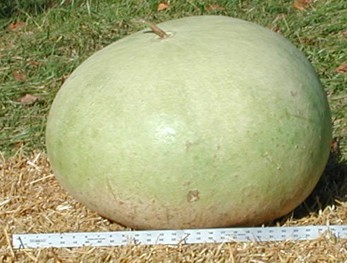
RGS034 Bushel Gourd ( Lagenaria siceraria )
Kettle shaped fruits growing to 16 to twenty inches wide, makes wonderful baskets or containers.
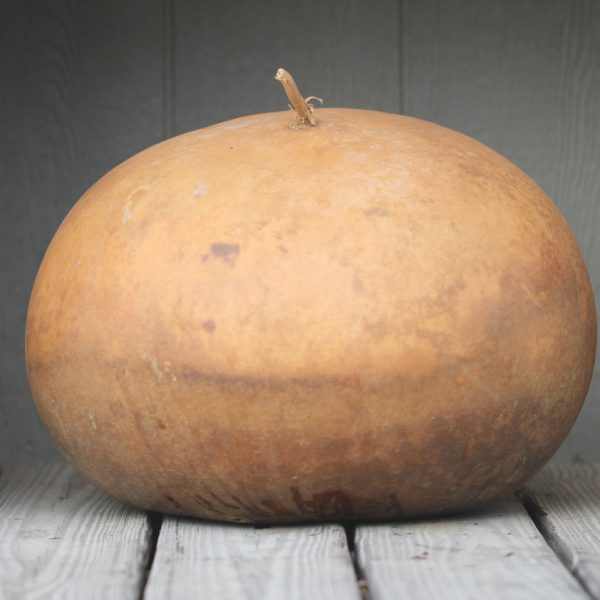
RGS177 100 Lb. Bushel Gourd ( Lagenaria siceraria )
Gigantic ornamental gourds. This bushel gourd produces gigantic size gourds that tin abound up 3 to 5 feet around ( circumference, or 20 inches diameter ), the size of a bushel basket, and tin weigh every bit much as 100 lbs. Of class, for the maximum size gourd possible, you should leave only one gourd per found while growing, only if max size is not important, yous can go out all of the gourds on the plant to grow a lot of huge gourds. Fantabulous for making crafts. Impress you neighbors by growing a giant gourd.
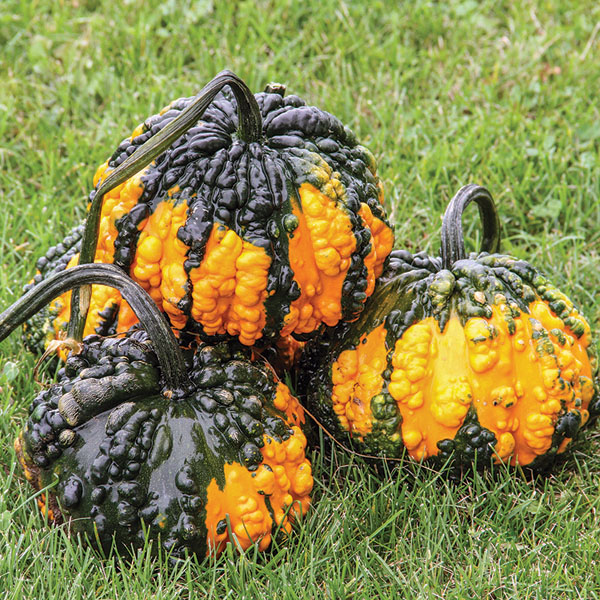
RGS174 Hoargarth
Distinctive new orangish and dark dark-green gourd from Rupp. Wart-covered fruit measures 7 inches wide past near v inches high. Intermediate bush type. Adds texture to autumn displays.
90 days.
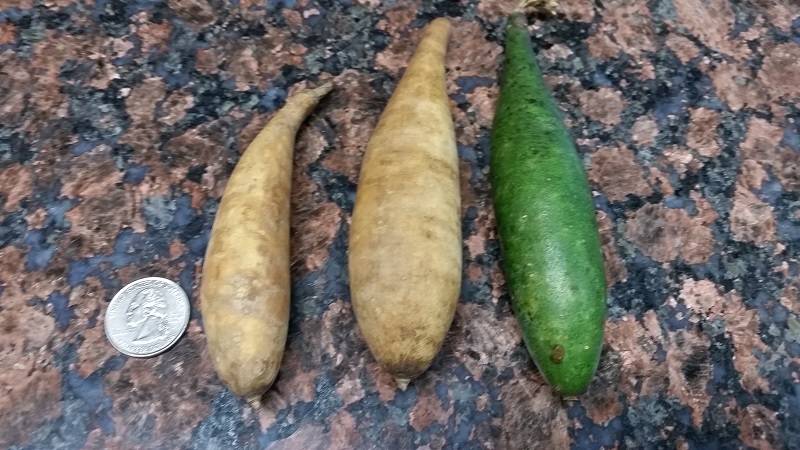
LET052 Mini Sausage Gourd
These are wonderful minor grouds for dry decorations and autumn wreaths. Averaging about an inch or more than in diameter and 4 to v inches long, they are so easy to work with. They dry to a buff brown or tin be painted as needed. We but accept a few packs of these left.

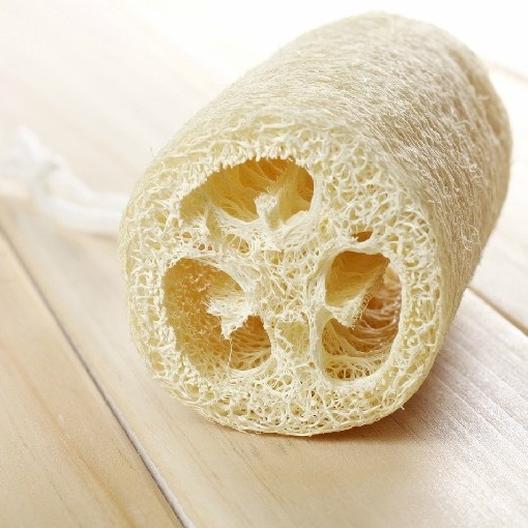
RGS031 Common Luffa Sponge
Anybody who has a garden, fence or lawn space should grow this amazing plant. The always popular dishcloth, bath sponge gourd. Should be grown on trellis, debate or let even to climb pocket-size trees.
The Loofah Gourd is a member of the Cucurbitaceae ( Gourd ) family unit. The Loofah is spelled several different ways, i.e., Lofah, Luffa or Lufa. It'south usually known every bit the Washrag Gourd. It is the but constitute known that can be raised and used as a sponge. The sponges are very versatile in that they can be used for bathing, washing dishes or scrubbing. The Loofah is widely used for bathing to invigorate the peel every bit well as souvenir giving and crafts. It is a very fast growing almanac that produce vines up to twelve feet or more. I have seen them grow over 20 ft. high in trees and produce dozens of gourds per plant. When fully matured, you can skin off the dried and well-baked outer shell to expose the fibrous sponge. To clean your Loofah you wash it in clean h2o and then soak it in a solution of bleach and water and allow to dry in the sun. Loofah sponges volition last a long fourth dimension if washed and allowed to dry out afterward each utilize. Here are some helpful links on growing and harvesting the loofa sponge:
How to abound natural loofa sponges.
How to harvest your luffa and plow them into sponges.
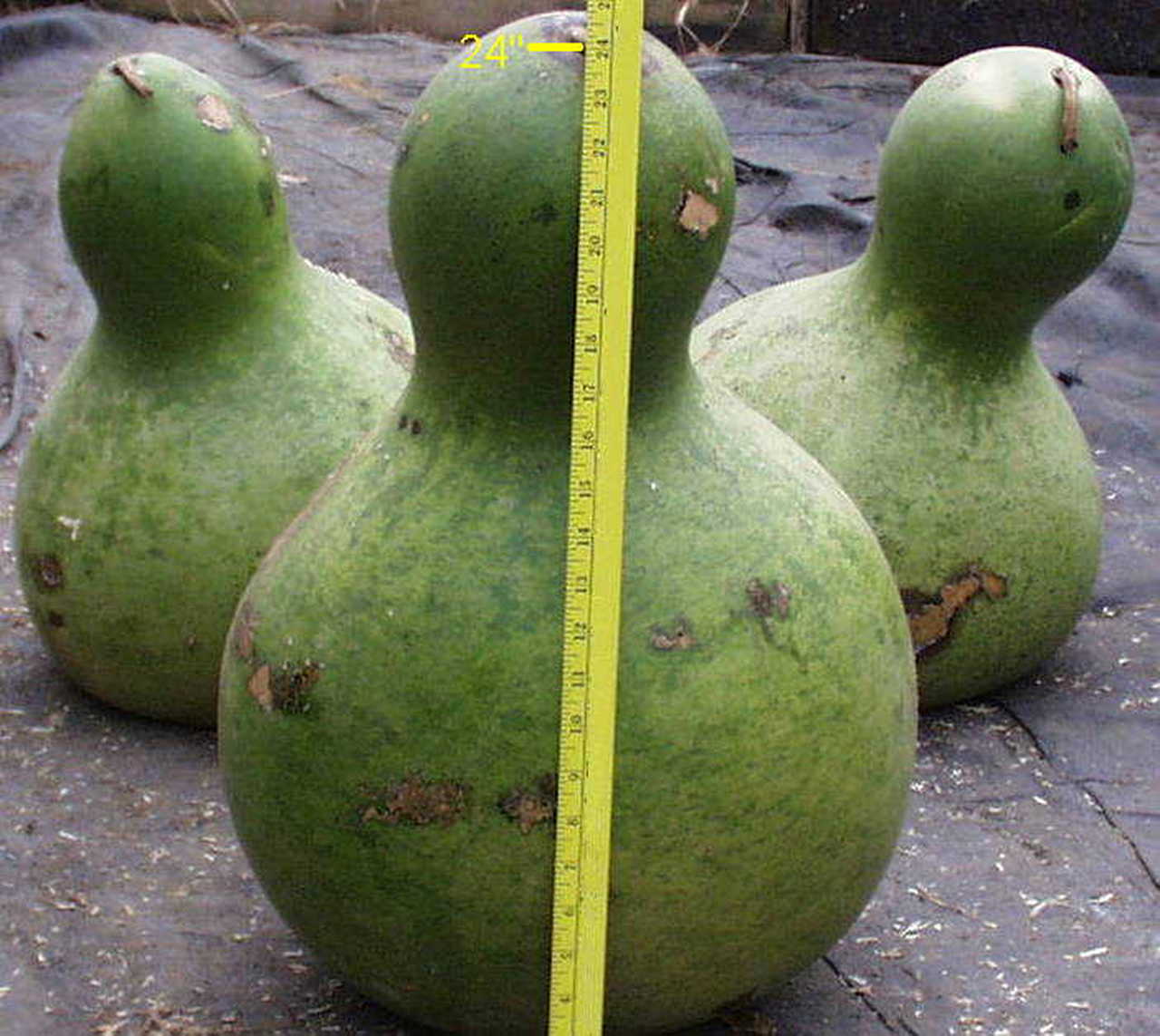
RGS164 Giant African Wine Kettle ( Lagenaria siceraria )
Wow, this is a big kettle gourd! We have had requests for these for a long fourth dimension, and have finally secured a source for true, viable seed. We have a very pocket-size amount this twelvemonth, and then order early on.
The Giant African Vino Kettle will produce a huge gourd measuring sometimes 24" or more than beyond the bottom of the gourd. Normal size is most xviii" across and virtually 15" tall in our feel.
A very pop gourd when stale. Musicians covet them for large drums. Requires a longer growing season than other gourds, almost 110 days.
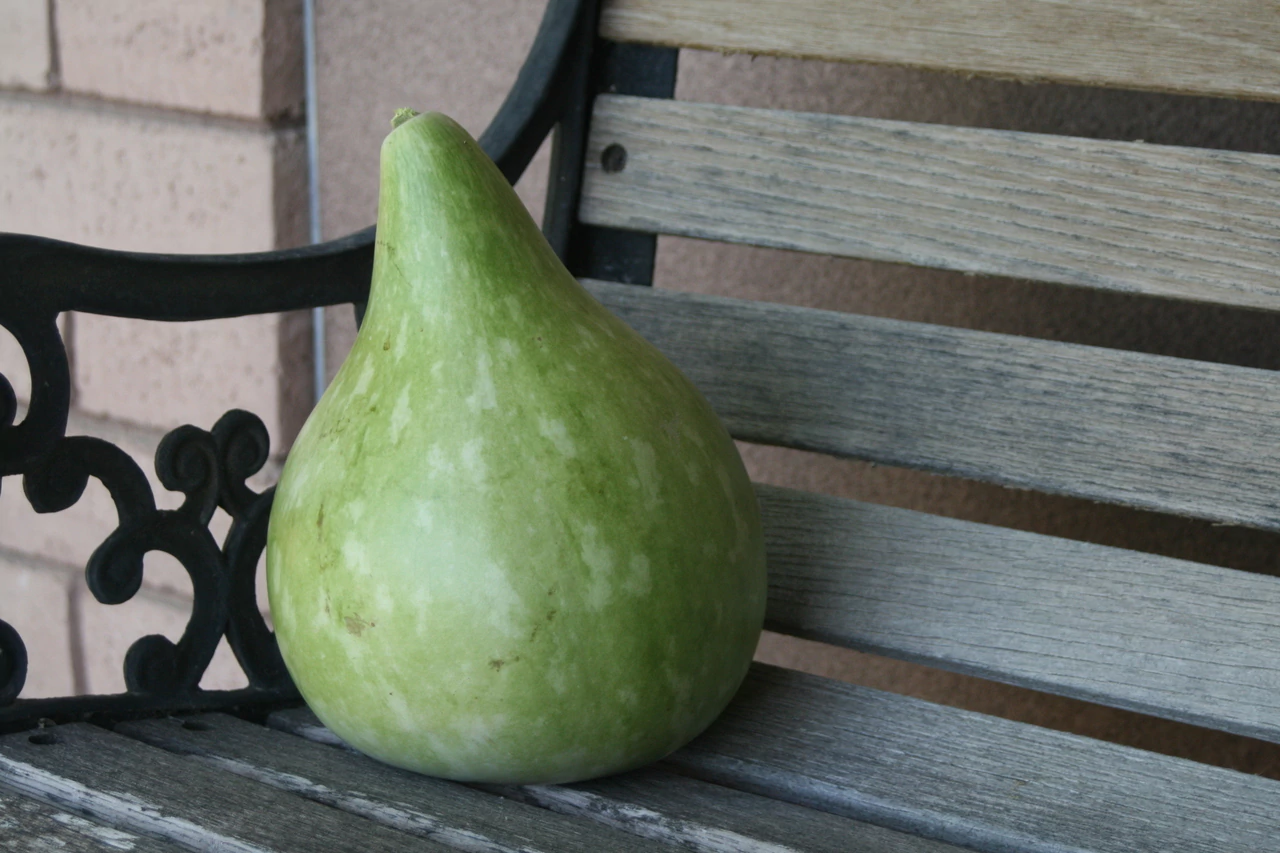
RGS051 Martin House Gourd ( Lagenaria siceraria )
The favorite of all gourds for making birdhouses. Like to small kettle gourd with large seedling on bottom and tapered stem cease.
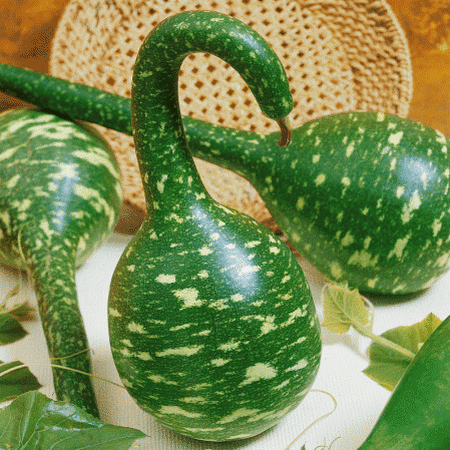
RGS015 Speckled Swan ( Lagenaria siceraria )
Smooth, nighttime green/mottled cream. Curved cervix, swan head shaped. Should exist picked when young for best shape and color.
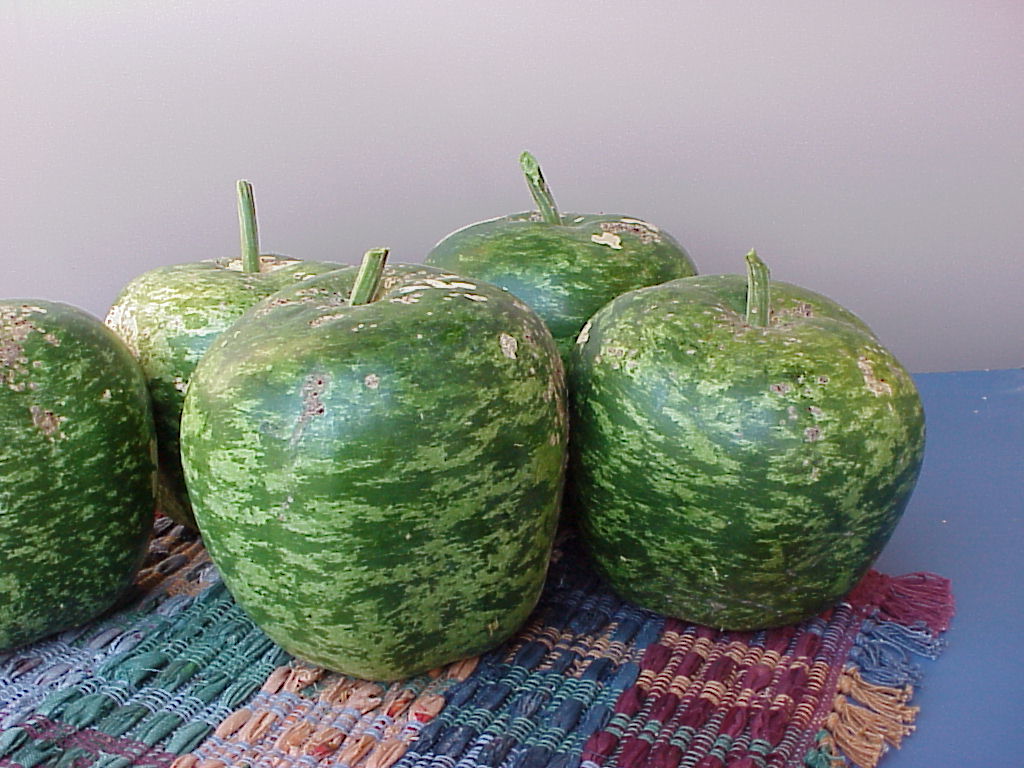
RGS041 Big Apple Gourd ( Lagenaria siceraria )
Looks very much like a large green apple reaching 5-seven" across. Dries well and has great potential for crafts.
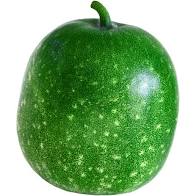
TGL024 Small Apple Gourd ( Cucurpita pepo )
Not to exist confused with the larger Apple tree Gourd (which is a true gourd), this variety is actually a hard shelled squash. It produces pocket-size, apple-shaped fruits that ripen to green and finally orange. Popularly used equally ornamentals, in decorations, and for crafting.
Apple Small gourds are easy to grow at dwelling house in the summer and come in loftier yields. The small-scale apple shaped gourds are nighttime light-green when fresh, and dry to be brown. Seeds can be sown indoors or straight. Plant seeds or seedlings in hills 6" apart to account for neat constitute growth. 100-120 days.
1.5g Parcel ( about 25 seeds ) $3.95
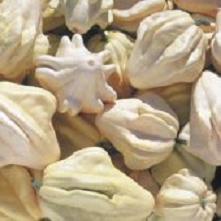
RGS143 Yugoslavian Fingers ( Cucurbita pepo )
100 Days. This is a most unique and unusual gourd! Big, slightly oval, like a very big egg with 8-10 fingers bulging out from the top, that course wings or ribs on the sides of the fruit. The cream colored fruit most closely resemble a very big Crown of Thorns gourd. An excellent ornamental type for fall decoration and marketing.
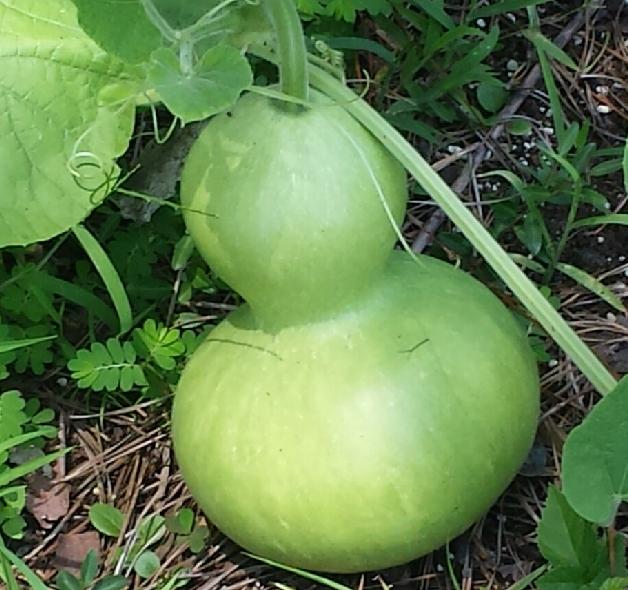
RGS002 Canteen Gourd ( Lagenaria siceraria )
The legendary bulb shaped gourd used and then widely for decorations. Dries to a vitrify brown.
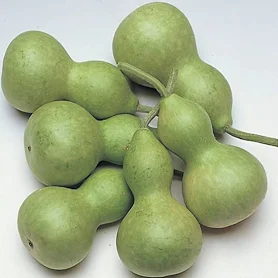
RGS032 Miniature Bottle Gourd ( Lagenaria siceraria )
A lovely decorative gourd with the same shape equally the familiar bottle gourd, but only half the size.
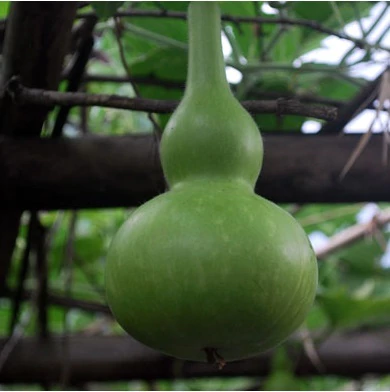
RGS160 Chinese Bottle Gourd ( Lagenaria siceraria )
These pear shaped gourds grow about ix inches tall by 4 inches beyond. It has a apartment bottom, making it an excellent craft gourd. The Chinese Canteen Gourd is used by many cultures effectually the world for many different purposes (food, beverage, container, garment, healing).
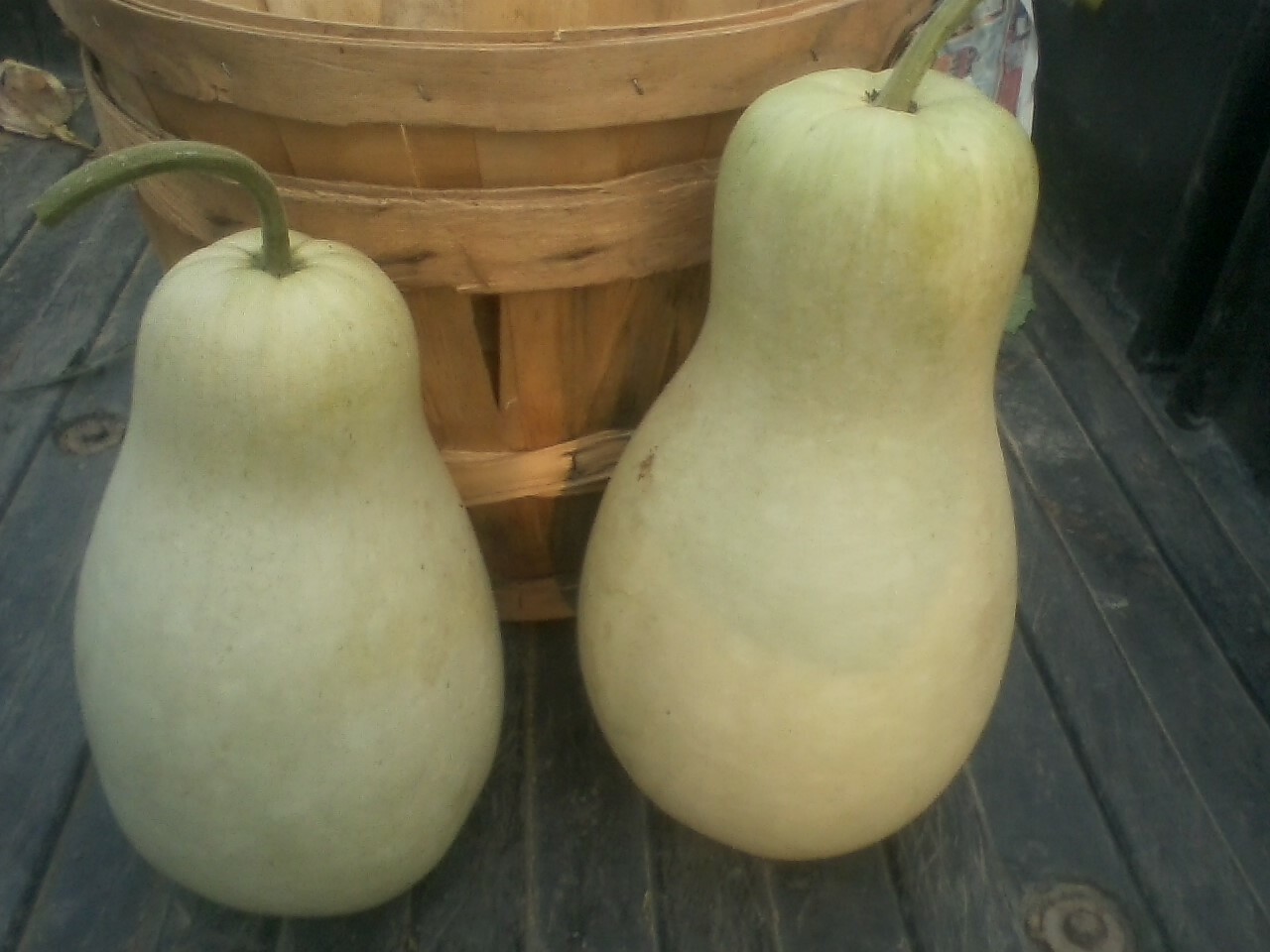
LET466 Santa Clause
We take had quite a few requests for this gourd over the years, it seems it is very pop for holiday decorations. Perfect for crafting. Often used to decorate with a "Santa Clause" face and hat. 95 days.
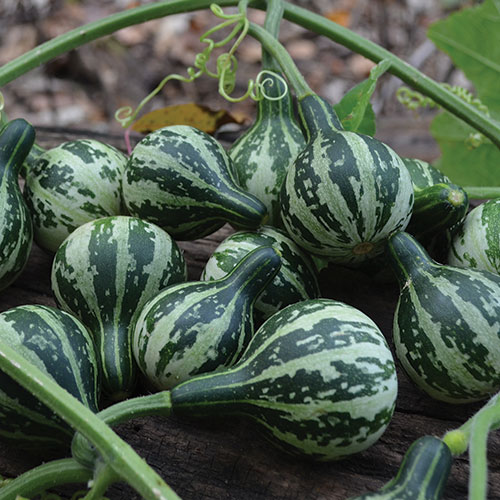
LET254 Tennessee Dancing, Spinning Gourd ( C. pepo )
A tiny gourd just 2" long! They are canteen shaped and dark-green and white striped- turning tan when dry. This unique heirloom used to be popular with schoolhouse children in years gone by, kids would bring 'em to play with. Dancing gourds spin just like a top, they brand great toys, superb crafts, arrangements, and much more than!


RGS003 Spoon Gourd ( Cucurbita pepo )
Colorful. Small ball at one end perfect for hollowing out to utilize as a spoon.

RGS004 Penguin Gourd ( Lagenaria siceraria )
Shape is similiar to the powder horn. A favorite with craftsmen, 12 inches long by 5 inches wide.
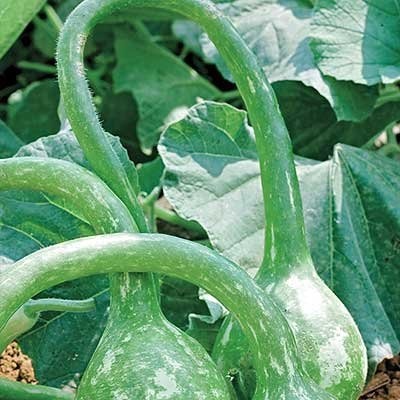
RGS010 Long Handle Dipper Gourd ( Lagenaria siceraria )
Beautiful gourd with curved long handle, used for dippers in the past and for birdhouses in the present.
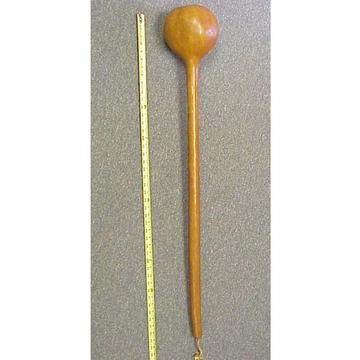
RGS178 Extra Long Handle Dipper Gourd ( Lagenaria siceraria )
A new pick from Clifton, these volition of course have to be grown from an upright position such every bit fence or trells. Oval-circular end is attached to a long handle that grows longer and straighter if suspended. Very popular for craft. Matures late, constitute early in short seasons. Near 125 days.
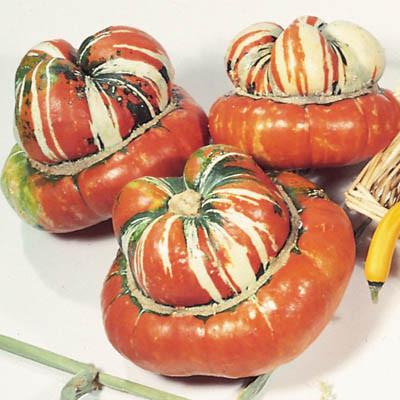
RGS013 Turk's Turban ( Cucurbita maxima )
Big Aladdin blazon gourd. Bright red-orange turban with white and green cap.

RGS020 Cave Human being's Club ( Lagenaria siceraria )
Knobby, long handled lodge shaped gourd.

RGS112 Dinosaur ( Lagenaria siceraria )
This variety from Seed Savers is very similar to the Caveman's Club we offering, but seems to have a longer neck and mayhap smaller seedling. Given to SSE years ago by a Cherokee member from Louisiana. Traditionally used to decorate sweat lodges. Solid-light-green fruits have curved necks and wing-like projections, perfect for gourdcraft swans. Total length of 18-24" with an eight" bowl and unique serpentine projections. Direct necks if grown on a trellis. 125 days.
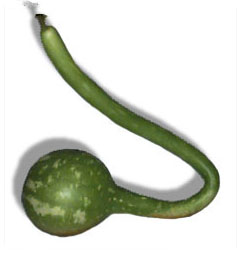
RGS022 Long Siphon ( Lagenaria siceraria )
Extra long 36 inch hollow handle with x inch bore ball terminate.
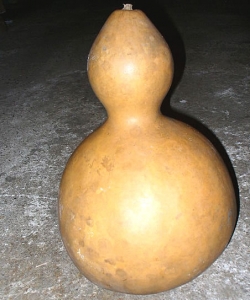
RGS023 H2o Jug ( Lagenaria siceraria )
Very like to the canteen gourd with hourglass shape, slightly larger and a trivial differnt shape, very ornamental.
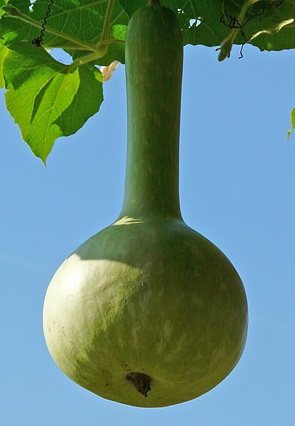
RGS176 Calabash ( Lagenaria siceraria )
Ane of the oldest and most used gourds which can either exist harvested young and used every bit a vegetable, or harvested mature, stale, and used as a canteen, utensil, or pipage. Lagenaria siceraria is thought to take originated in Africa and is considered one of the oldest domesticated plants in the world.
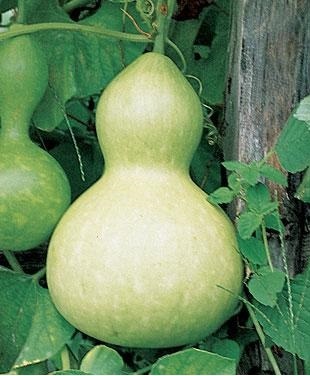
RGS029 Birdhouse Gourd ( Lagenaria siceraria )
A ball shaped gourd with a long neck, very popular for creating natural birdhouses.
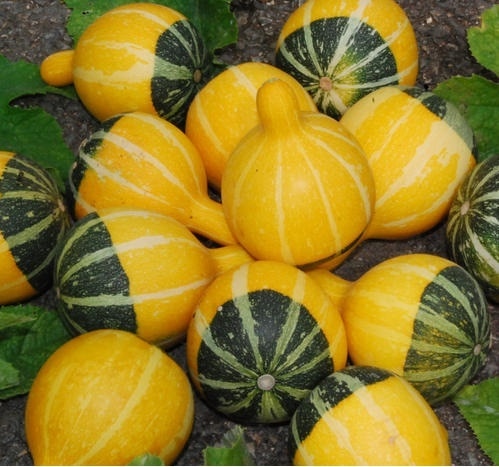
RGS033 Pear Bicolor ( C. pepo )
Pear shaped difficult and smooth fruit with lower half greenish, upper one-half yellow to buff. Not bad wreath decoration material as well equally fall cornucopia.
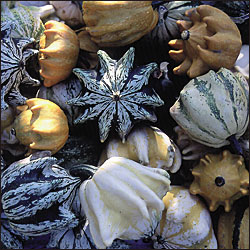
RGS109 Ten Commandments ( C. pepo )
Softball sized fruits have 5 pairs of protruding prongs that point towards the bloom end. Nice mixture of brilliant striped, mottled, multicolored fruits. 95 days.
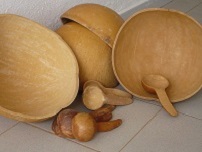
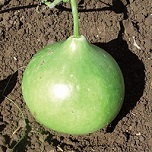
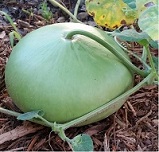
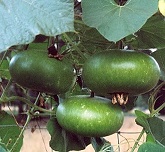
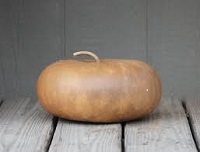
RGS189 Bowl/Tobaccobox/Canteen/Handbasket Gourd Seed Mix
This seed mix is a corking alloy of craft gourds in various sizes and shapes. These gourds volition produce bowls, canteens, tobacco box, sugar bowl and baskets types. The basket and basin types are small bushel types of unlike sizes and shapes. The carbohydrate bowls, tobacco box and canteens are gourds with a flattened shape in various sizes. About 90-110 days. This is a mixture of seeds, varieties are not separated.
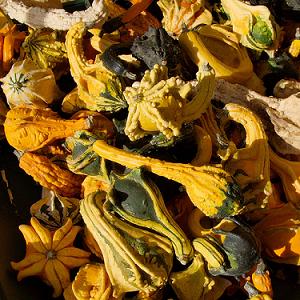
RGS158 Autumn Wing Swan Mix ( Cucurbita pepo )
The Fall Wings blend is a very unique gourd series that offers many colors and patterns on fruit that have wings on the bulb end. This formulated mix includes approximately 50% medium size wing gourds and 25% each of small wings and large wings. Of course this will vary slightly from pack to pack.
All the sizes have a winged seedling that is approximately two.five-3" in diameter. The small size has a four - five" long neck; the medium size has a 6" long neck; the large size has a 12" long neck. Many of the fruit volition too be warted. Y'all should found this mix early so that the gourds can fully mature before harvest. Immature wings on the gourds are easily damaged and can intermission off or rot if hobbling. 100 days.
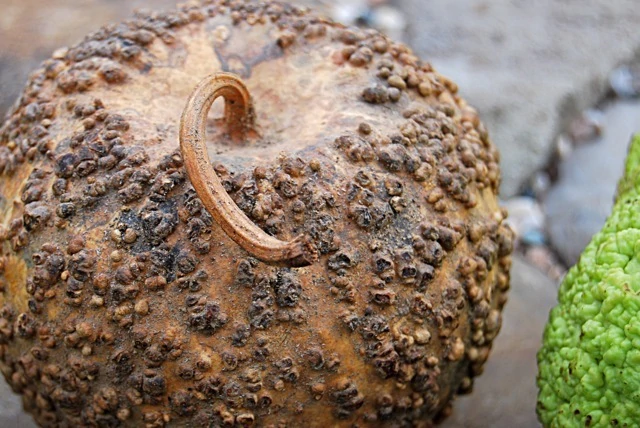
RGS110 Bule ( Lagenaria siceraria )
A rare French heirloom that is shaped like an viii" Big Apple gourd, but these are covered in attractive warts. They are very ornamental and make a good market item.
Many large seed companies have their ain unique mix of gourd seeds, we have picked out some of our favorites:
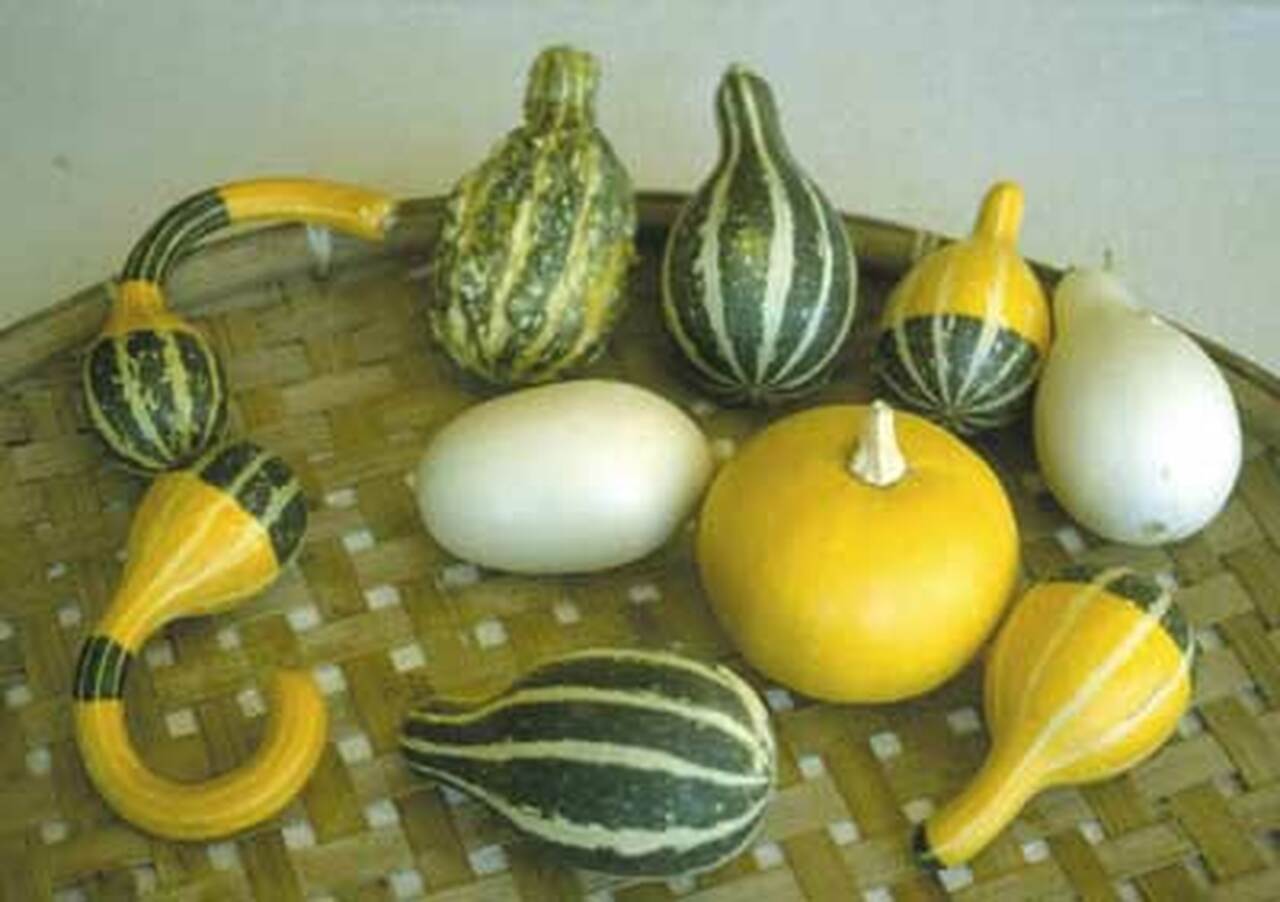
TWT104 Modest Ornamental Mixture
Beautiful patterns, sizes, shapes and colors. Modest fruits are groovy for tabular array decorations, fresh or dried wreaths, and so many other crafting projects.
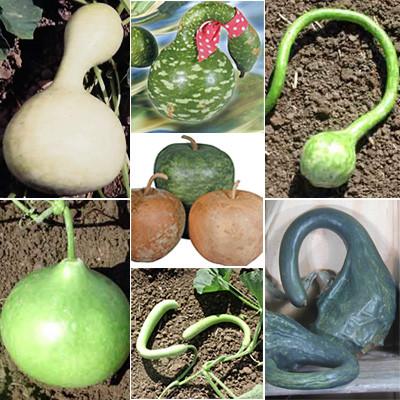
RGS175 Big Boy Mix
Big Boy Mix contains Swan, Caveman'southward Club, Bushel, Dipper, Birdhouse, Apple, Serpent and other big gourds. This is a blended seed mix that will produce an incredible amount of gourds. An economical way to purchase the near popular large gourds.

RGS026 Small Warted Mixture
A mixture of favorite small warted gourds in an exceptional array of colors and shapes including bi-colors for craft use.
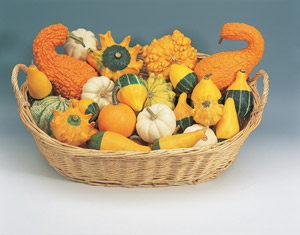
RGS012 Small-scale Fruited Mix
Wonderful blend of types for drying and ornamental uses. Mostly C. pepo varieties.
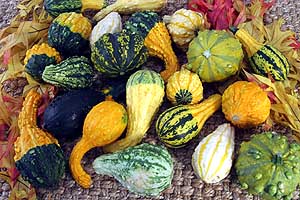
SF073 Weird Warted Pro Mix ( Cucurbita Pepo Mix )
With a fantastic array of shapes, patterns, and colors, this wildly warted gourd mix is peachy fun for the family unit garden, and a high demand detail for market. Originally created for the packing trade, with a more uniform smaller size than some mixes, with flats, rounds, pears, and spoons in solids, stripes, and bicolors all included. 80-95 Days.

TRN611 Super Fly Mix
This is a fun mix to grow, you get so many dissimilar shaptes. Plants produce 8-12" alpine gourds weighing in the 1-2 pound range. Multi-colored, many warts and shapes.Hybrid PM, Phytophthora resistance.
95 days.
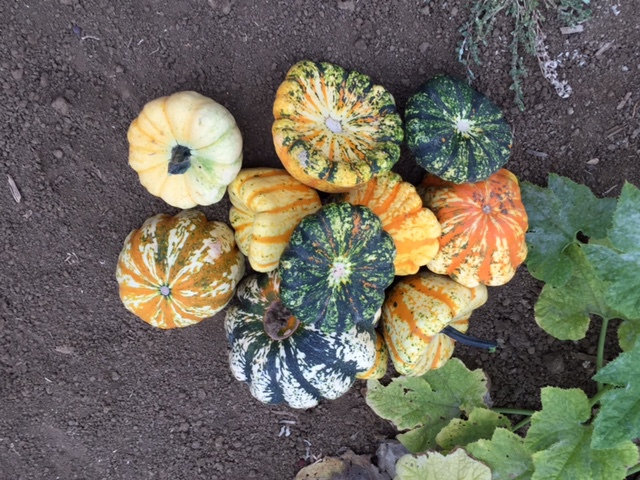
RGS166 Harvest Flowers Hybrid Mix
An crawly collection of ornamental gourds with bloom patterns. As many colors, shapes and patterns equally one tin imagine. 90-110 days.
The snake gourd is actually a quick developing vine that, a long time before being grown, was ingested past the residents of the regions exactly where it grew untamed. Today information technology's a relatively well-known veggie utilized in numerous standard recipes. They are often simple to find in Asian grocery shops while in season. It is really an annual climber with increased or even much less palmate, ii or 3 lobed or even somewhat wavy leaflets forth with serrated edges.
Its flowers have got lengthy fringes on the petals, and although male person flowers usually are carried in cluster, female flowers are individual. The bear delicious, strangely shaped fruit that appear to be but similar coiled up snakes, or can be grown on a trellis to exist long and direct. They're plain green or even grey-greenish becoming orange or red whenever ripe. Their rind is thin and likewise the mankind thick besides every bit juicy. Just like cucumbers, they include several little, apartment, ovoid, as well every bit soft seeds that, in one case the fruit is ripe, plow out to be big and difficult. They've got a delicate, fairly sweet flavor.
Ophidian gourd includes a big amount of water equally well as cobweb, only a number of calories. It really is abundant with proteins, vitamins A, B and C in addition to minerals (manganese, potassium, atomic number 26 and iodine). It is but a diuretic that can assist the organism by reducing its harmful particles. It features a relaxing impact on the bodily tissue; therefore calming inflammations.
Additionally, it features a positive as well as calming impact on the nervous organisation. It encourages the circulation of claret equally well equally contribution to cleaning the claret of toxins. Much like green beans, snake gourd is cutting into pieces every bit well every bit cooked in boiling salted water for 5 to 10 minutes.
It may exist served with a back-scratch sauce, salads, vegetable soups, ragouts, or couscous. Information technology may likewise be included with various other veggie, cooked along with tomatoes and onions, or combined with chopped meat or even chopped fish. The immature shoots and leaves may besides exist consumed in salads or even stews.
Snake Gourd Seeds
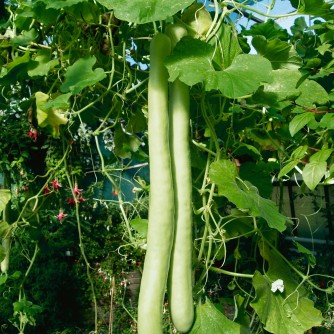
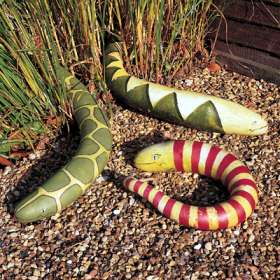
RGS005 Ophidian Gourd ( Lagenaria siceraria )
A favorite from England. An First-class climber with long, curved, gourds that abound long and curled and look like a snake. They will dry out hard and make a really overnice arts and crafts that can be painted. They can exist eaten like a summer squash at its early stages. It is best to grow this vining gourd on fence, trellis or some other blazon of back up for obtaining immature directly fuits, or allow to grow on the ground to obtain the curvy snake design. Well-nigh 100 days to mature.

RGS169 White Glory Snake Gourd ( Trichosanthes anguina )
This unique serpent gourd is a new hybrid developed and introduced recently by a leading seed company in Thailand. White skin fruits are almost fifteen inches long x 1-1/2 inch in diameter.
Plants grows vigorously in warm climates, suitable for subtropical weather with high pelting. This vine constitute is very profilic and offset fruit picks can exist obtained 45-fifty days after sowing.
This multifariousness is strongly tolerant to disease attacks, easy to grow.

RGS156 Thai Extra Long Hybrid Serpent Gourd ( Trichosanthes anguina )
This is a new hybrid variety developed by a leading seed company in Thailand. Extra long fruit can accomplish 78 cm long with 3.6 cm in diameter, 370 grams in weight. Frutis skin is light light-green with white stripes. Plants grow vigorously in warm climates and very productive. For getting furits in straigh and long shape, plants are best grown along the high supports. Fruits can be harvested at whatever stage, from young to total size. Piece of cake to grow.
Loofah Sponges
The Loofah Gourd is a fellow member of the Cucurbitaceae ( Gourd ) family unit. The Loofah is spelled several different means, i.e., Lofah, Luffa or Lufa. It'southward commonly known as the Washrag Gourd. It is the only plant known that can be raised and used as a sponge.
The sponges are very versatile in that they can be used for bathing, washing dishes or scrubbing. The Loofah is widely used for bathing to invigorate the skin equally well as gift giving and crafts.
It is a very fast growing annual that produce vines up to twelve feet or more. I take seen them grow over 20 ft. loftier in copse and produce dozens of gourds per plant.
When fully matured, you lot can peel off the dried and crisp outer beat to expose the fibrous sponge. To clean your Loofah y'all wash it in make clean water and then soak information technology in a solution of bleach and h2o and allow to dry out in the lord's day. Loofah sponges will concluding a long fourth dimension if done and allowed to dry after each use.
Luffa Seeds
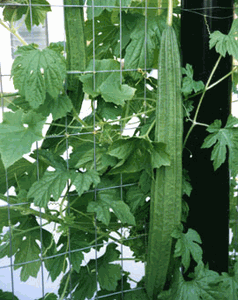
3319 Oriental Hybrid Extra Long
Young fruits are eaten, fruit left to mature on the vine can exist used for luffa sponges. This unique hybrid luffa produces extra long fruits, 33 inches long and ii-3 inches broad in size and over a pound in weight. Plants are very vigorous and strongly resistant to estrus,common cold, rain and wind. This variety is very productive, yielding loftier quality fruits which are skilful for long distance aircraft and marketing. One of the most popular varieties in the Orient.
Edible Gourd Varieties

RGS186 Snake Gourd ( Trichosanthes cucumerina )
Can be eaten like summer squash when 6" around. Smoothen pale greenish skin with flossy yellow mankind. Information technology is commonly considered a vegetable, which is used in cooking a diverseness of staple Indian dishes such as kootu, back-scratch, sabzi and dal.
Ophidian gourd, being low on calories and high in essential nutrients, tin can be taken regularly by those people who are strictly following a diet regimen to lose weight, it provides dietary fibers that can exist processed easily in the stomach, keeping ane feeling full for longer, reducing cravings and assisting in burning fat at a quicker pace.
nake gourd has an intrinsic expectorant quality, which implies that it tin can readily loosen whatsoever backlog phlegm or mucous secretions and remove them from the respiratory tract. This immensely benefits lung function and besides prevents any allergies and animate difficulties such equally asthma.
Snake gourd has innate content of the smoothening or emollient Vitamin E, that also has antioxidant properties. The gel excerpt from the vegetable, when applied on sunburns and rashes, pacifies the aggravated and stale upwardly regions of the skin, leaving it soft and completely moisturized.
Ophidian Gourd has a multitude of vitamins and minerals which provide nourishment and vigour to the hair strands. Moreover, when applied as a gel, it penetrates deep into the layers of the scalp and protects follicles, thereby maintaining the thickness and stability of hair. Snake gourd is an ideal choice if you are looking to proceeds long and potent hair.

RGS172 Cuccuzi ( Lagenaria siceraria )
Italian heirloom, grown past Jefferson at Monticello. Pale green fruits up to 36 in. long, for best tenderness harvest at six-12 inches. Fruits milder than luffa. Problems-resistant plants are a great zucchini substitute. Big sprawling vines upwardly to 20 feet long, best planted on the edge of the garden; at Monticello they're grown up a sturdy 10-ft. tall wooden arbor.
Decorative, Edible Squash
Abound your own fall decorations and tasty dinner squash from the seeds below.

1A211 Marina di Chioggia ( Cucurbita maxima )
Beautiful large grayness-green bumpy turbans average 10 pounds. Heirloom winter squash from Italian republic. Sugariness dry out flesh, flavor improves with storage. Good keeper. 95-100 days.
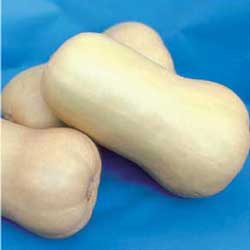
1A364 Waltham Butternut
Butternut, compatible large v lb, productive, very long storage potential, tan peel, 100 days.
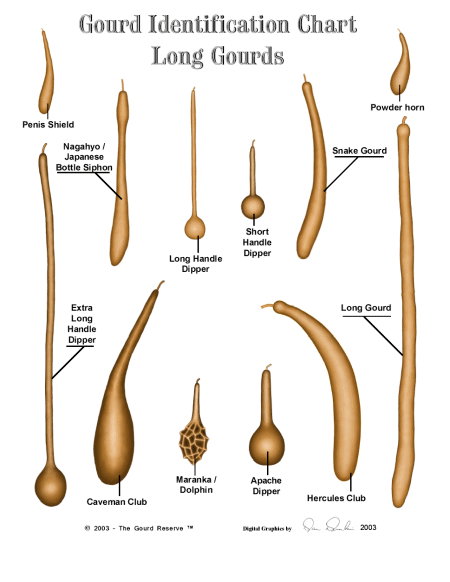
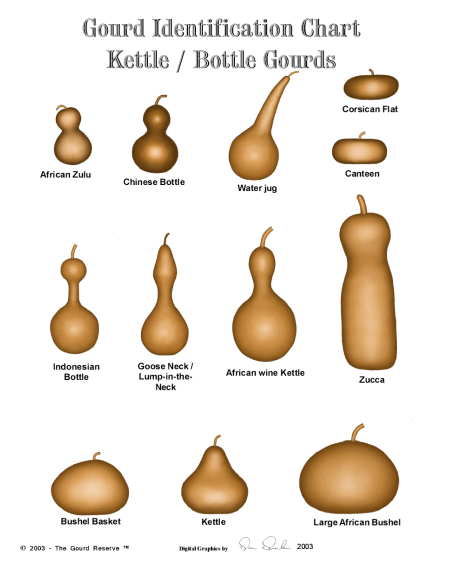
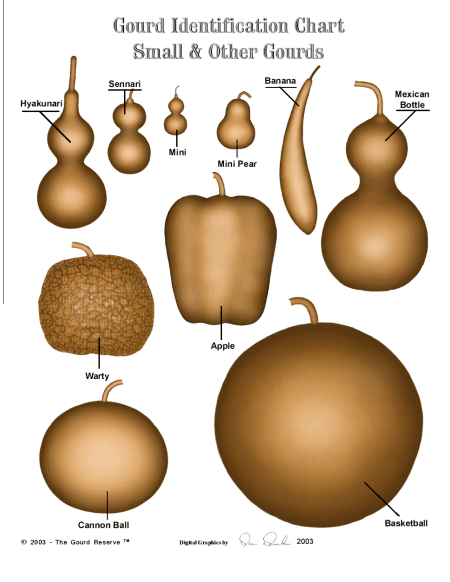
Digital Gourds nautical chart © Dan Dunkin 2003
This nautical chart is used courtesy The Gourd Reserve
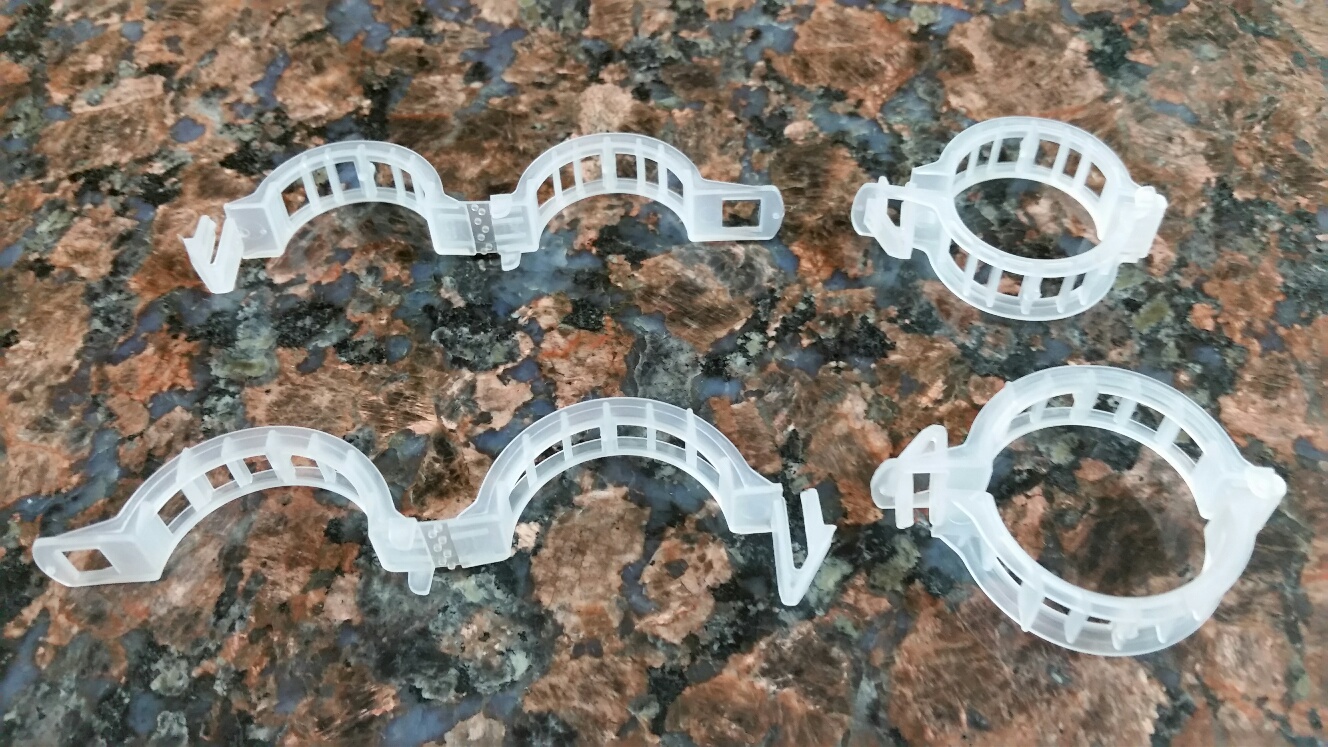
JCLIP Jumbo Trellis Clips
The best clips for traing gourd vines to fence or tressis. These jumbo plastic trellis clips are larger than standard tomato trellis clips and form a i inch circle around stem and trellis line or cage wire compared to a ¾ circle on most love apple trellis clips ( every bit shown in photograph ). These have been so popular over the years that we now just offer this size and accept discontinued the smaller size shown in photo.
These are very handy when y'all are using bamboo stakes or clipping larger pepper plant stems. Clips have side openings for ventilation and accept a quick release characteristic that allows you to motion them during the twelvemonth as the plant grows. Use them year afterwards twelvemonth. Excellent for vine crops also and staking any immature plant.
Jim'southward Plant Growth Stimulator
Delight note that this is not a institute nutrient or fertilize, this is a combination of natural ingredients intended to meliorate constitute growth. Many greenhouse growers and commercial farms utilise a combination of these ingredients in their growing process. Nosotros have been using this formula in our gardens, fields and greenhouses since 1992, and nosotros employ it on everything we grow. We would not make this available to our customers if we did not firmly believe that it does heighten the growth and wellness of plants that it is applied to. Notation: We simply ship this product to addresses inside the U.s.. The following ingredients are used in making Jim'due south Plant Growth Stimulator: Each 8 ounce bottle of JPG01 Constitute Growth Stimulator makes xvi gallons spray-on solution, you can also use a drench and cascade information technology around the base of the institute if you lot prefer. The canteen comes with a 1/2 ounce measuring spoon, simply mix a half ounce of institute growth stimulator with a gallon of water and spray onto the plants, or deluge the soil around the plant. : JPG01 Plant Growth Stimulator
To see the results for yourself, we advise using information technology on some plants and not on others and meet the departure. Gibberellic Acid
Gibberellic Acid is EPA canonical, and is commercially used to grow most fruits and vegetables nosotros consume. B1 Vitamins and Plant Hormones
Micronutrients
Other ingredients
mckeansampriscrom.blogspot.com
Source: https://www.seedman.com/Gourds.htm
Post a Comment for "Can You Keep Gourds From Year to Year"